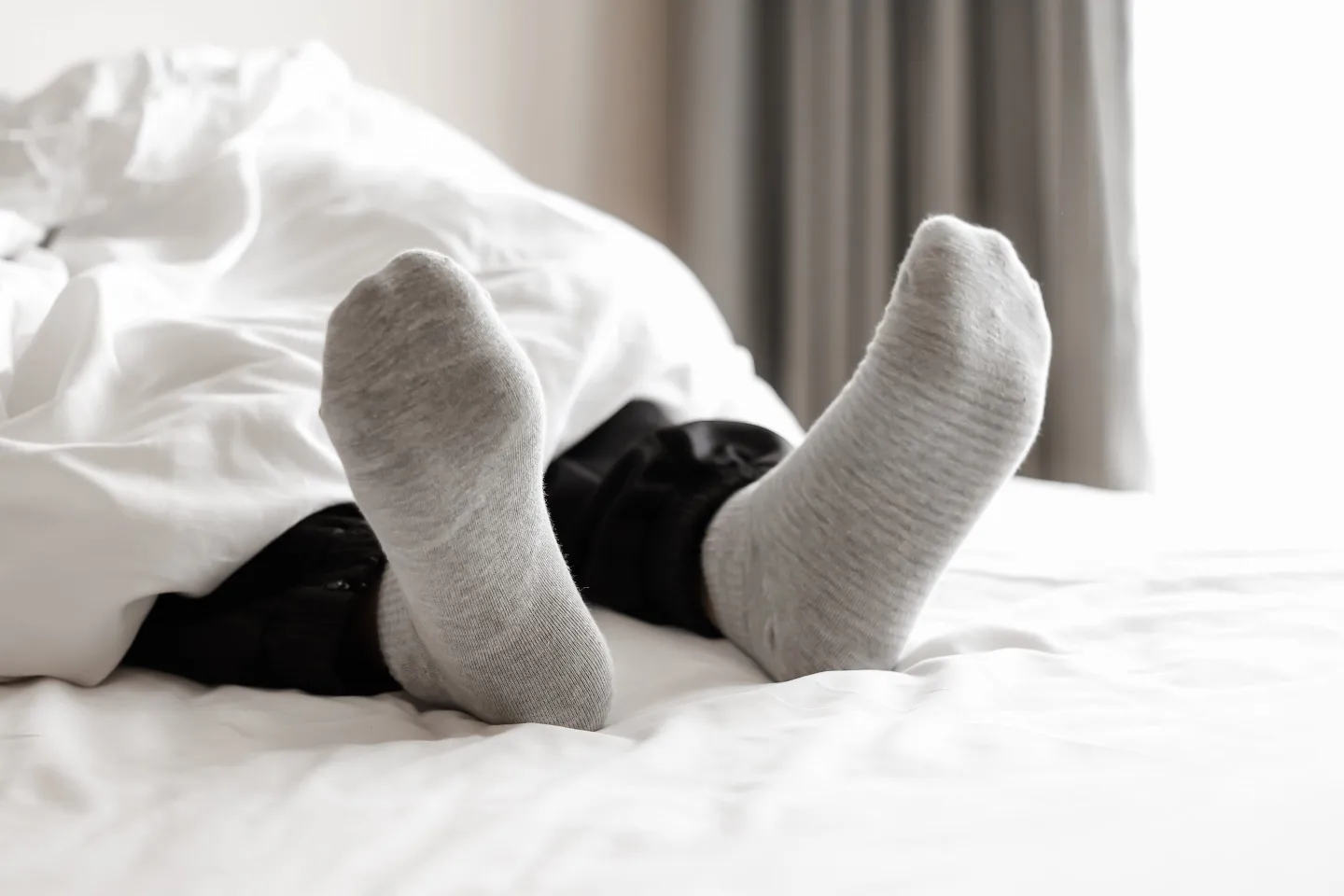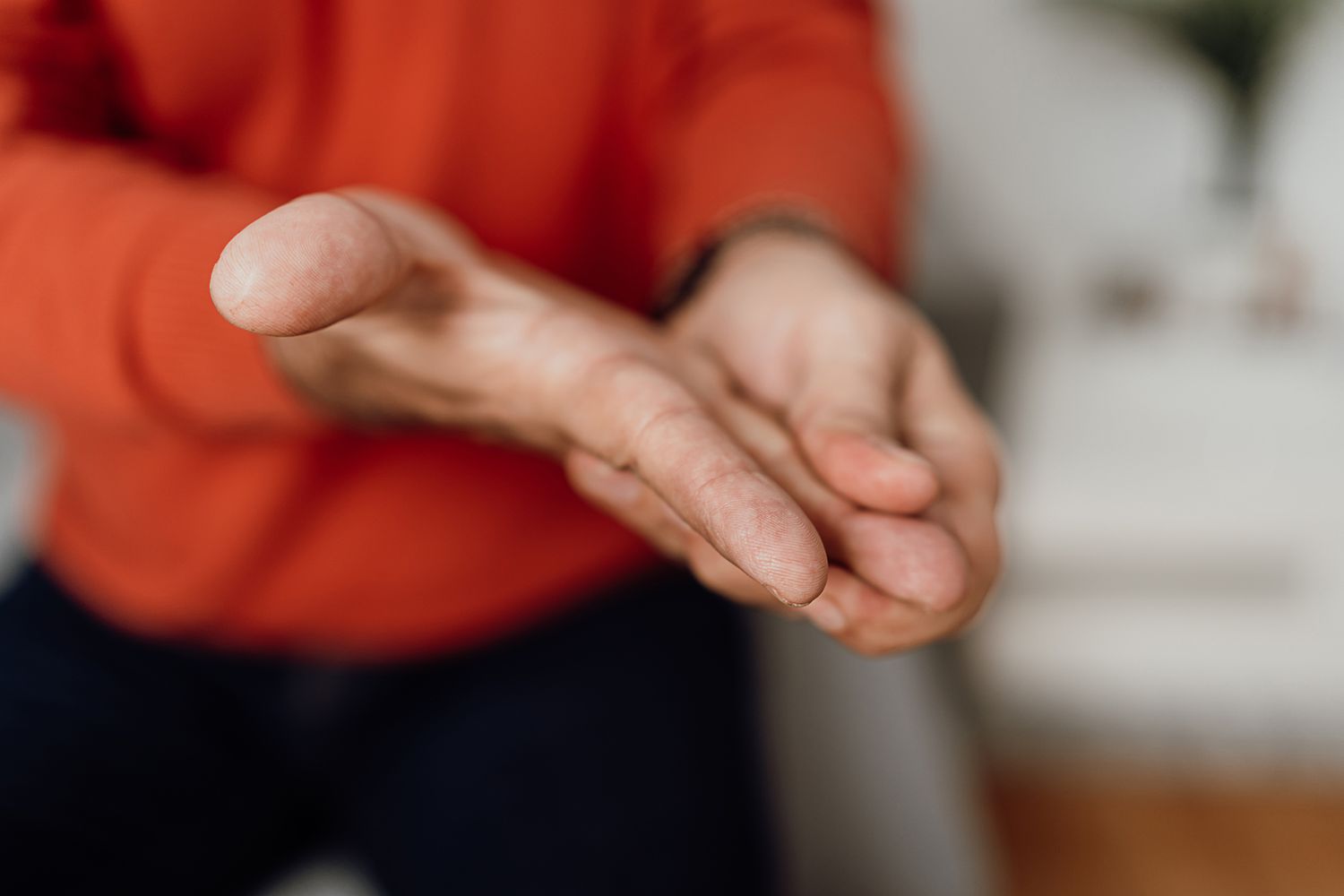
Why Warm Feet Help You Fall Asleep More Quickly
Most people think of sleep as a brain event. It is also a full-body process of temperature regulation and signal timing. Your core temperature must drop slightly before deep sleep begins. Warming your feet and hands helps that process. The body reads peripheral warmth as a cue that it is safe to release heat through the skin. Studies show that people who warm their feet before bed fall asleep up to fifteen minutes faster and experience fewer awakenings (Kräuchi and Wirz-Justice 2001).
The goal is not simply to stay warm. It is to help your body complete the small thermal shift that tells the brain sleep can begin.
How Warm Feet Influence Sleep
When the blood vessels in your feet dilate, heat moves from the core toward the skin surface. This lowers your core body temperature slightly, which promotes the onset of sleep. The process is called distal vasodilation. It is a sign of relaxation and readiness for rest.
Research using infrared imaging and thermosensors has shown that the rate of heat loss from the extremities closely predicts how quickly a person falls asleep. Those who achieve higher distal-to-core temperature gradients—meaning warmer hands and feet—consistently show shorter sleep latency and deeper early-night sleep (Kräuchi et al. 1999).
Warm feet are a biological signal that it is safe to power down.
The Short Guide
If your feet are cold at bedtime
Soak them in warm water for ten minutes or wear a fresh pair of socks made from breathable cotton or wool. This speeds vasodilation and triggers parasympathetic relaxation.
If you wake up often during the night
Check that your bedding allows air circulation. Overheating after the initial warm-up can cause awakenings. Use lightweight covers or uncover your feet once you feel drowsy.
If you live in a hot climate
Cooling the room to around 65–70°F while keeping your feet warm helps the body maintain the ideal temperature gradient for sleep onset.
If you have poor circulation or Raynaud’s symptoms
Warm socks or a brief warm foot bath before bed can reduce vascular constriction and improve comfort. Choose gentle heat, not electric pads that maintain high temperatures.
Why Feet Are Key to Thermoregulation
The hands, feet, and face contain specialized blood vessels called arteriovenous anastomoses, which act as rapid heat exchangers. When dilated, they release body heat efficiently without raising skin temperature excessively.
This mechanism explains why cold feet are one of the strongest physical predictors of insomnia onset. It also clarifies why thermal interventions—such as warm foot baths, socks, or mild bed heating—improve sleep onset and stability without sedation (Van Someren 2006).
Keeping your feet warm is a way of guiding your nervous system rather than forcing it.
How to Test Your Ideal Method
Pick one thermal cue to test for a week, such as wearing socks or doing a short foot soak before bed.
Track how long it takes to fall asleep and how rested you feel in the morning.
If you still wake up, try adjusting room temperature or bedding weight.
Avoid caffeine, alcohol, and heavy meals within two to three hours of sleep since they interfere with thermoregulation.
Reassess after one week and keep what feels natural.
Practical Tips
Choose socks wisely
Opt for breathable natural fibers like cotton or merino wool. Avoid tight bands that restrict circulation.
Try a short warm soak
Immerse your feet in water at about 104°F (40°C) for ten minutes before bed. This is long enough to trigger vasodilation but not long enough to raise overall body temperature.
Create a cool-warm contrast
A slightly cool room and warm feet enhance the gradient that signals the brain to sleep.
Maintain hygiene
Use clean socks nightly. Residual moisture or sweat can interfere with temperature balance.
Common Pitfalls
Thick synthetic socks that trap heat can backfire by causing overheating after sleep onset.
Electric blankets that maintain constant high warmth disrupt the natural temperature drop during early sleep.
Skipping a consistent bedtime routine reduces the cumulative effect of temperature conditioning.
When to Seek Advice
If cold feet or nighttime temperature discomfort are persistent, consult a clinician. Chronic circulation issues, thyroid imbalance, or restless legs may need evaluation. For most healthy people, simple thermal adjustments work better than medication for improving sleep onset.
The Takeaway
Warm feet signal safety, relaxation, and readiness for sleep. Helping your body release core heat through gentle warming of the extremities is one of the simplest evidence-based ways to fall asleep faster and stay asleep longer. A small shift in bedtime temperature may do more for your rest than another supplement or screen filter.
References
Kräuchi K and Wirz-Justice A 2001 Circadian rhythm of heat production, heart rate, and skin and core temperature under unmasking conditions in men. American Journal of Physiology–Regulatory, Integrative and Comparative Physiology 280(3):R616–R625. https://doi.org/10.1152/ajpregu.2001.280.3.R616
Kräuchi K, Cajochen C, and Wirz-Justice A 1999 Warm feet promote the rapid onset of sleep. Nature 401(6750):36–37. https://doi.org/10.1038/43366
Van Someren EJW 2006 Mechanisms and functions of coupling between sleep and temperature rhythms. Progress in Brain Research 153:309–324. https://doi.org/10.1016/S0079-6123(06)53019-0
Okamoto-Mizuno K and Mizuno K 2012 Effects of thermal environment on sleep and circadian rhythm. Journal of Physiological Anthropology 31(1):14. https://doi.org/10.1186/1880-6805-31-14



















